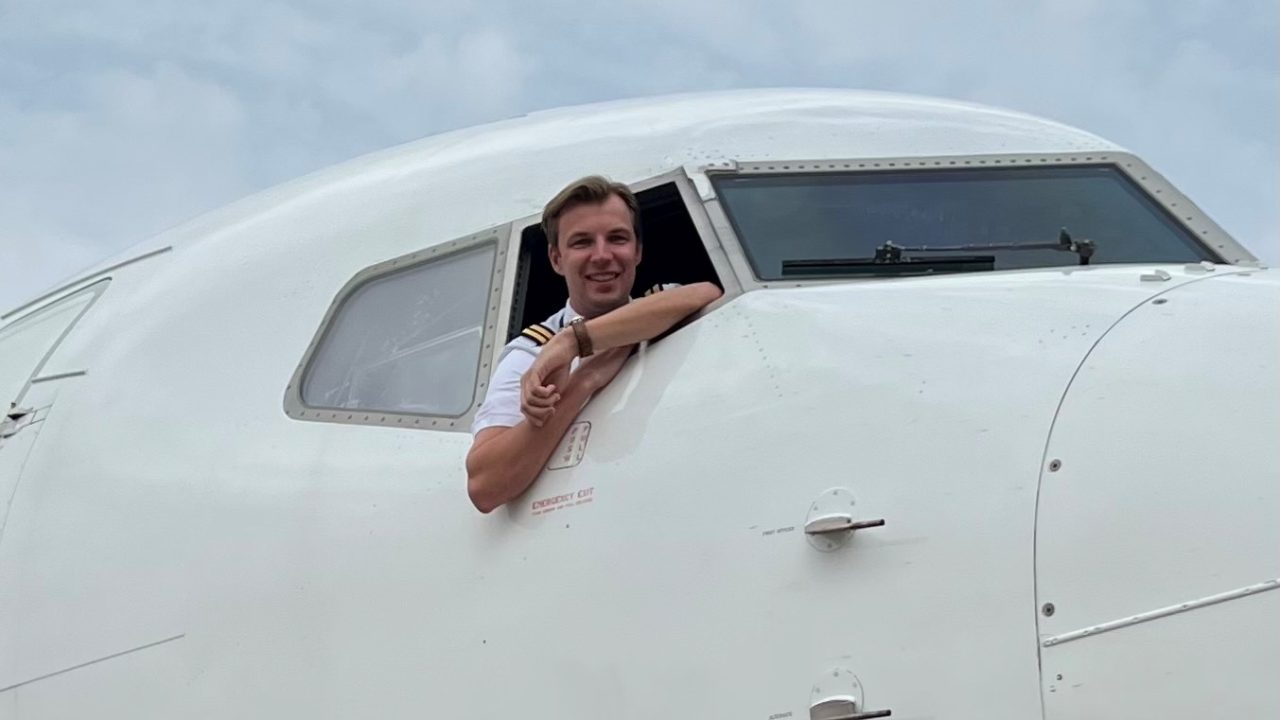¡Buenas! Have you ever wondered what a pilot’s life is like? Ryanair pilot Diede van Dijk takes you from his tropical hometown on his sunny journey as a pilot. He made his first meters as an EPST student in Greece and after graduating he settled on Palma de Mallorca, where he sits in the cockpit of the Boeing 737. What do his days under the Spanish sun look like? Read more!
Introducing Diede
Diede started his training at EPST in August 2019 and learned to fly at Global Aviation in Megara, Greece. “Living there and learning to fly was very good,” he says. “It was an unforgettable time going island hopping on the Greek islands in a Piper PA-28 and enjoying the beautiful weather in our free time with a nice group of fellow EPST students. I look back on it with great pleasure!”
His training was finished in December 2021 and Diede returned to EPST in the Netherlands for the APS / MCC course. “Here you learn to work with a crew. You get to know the Boeing 737 and learn the ‘etiquette’ for the cockpit,” explains Diede. He then looked forward to his application with confidence. “EPST raises the bar for its students. It ensures motivation and the good results give you confidence for the selection. EPST will then prepare you with simulator training and a practice interview. All this has helped me enormously with the selection for Ryanair. I received my license in March and a month and a half later I was hired at Ryanair!”
Starting with Ryanair: taking off with a Boeing and line training in Mallorca
Diede continued his journey in London, where he had to pass the type rating for flying the Boeing 737. “It is a three-month training with theory and then practical training in a simulator. You conclude the training with a base training, in which you take to the air for the first time with a 737. You do this together with a few classmates, a captain and a safety pilot.”
That base training is a real highlight, says Diede. “You actually work towards this throughout your entire training and perhaps your entire life. Taking off and flying with a Boeing for the first time is a great feeling, the touch-and-gos are the icing on the cake. It is impossible to describe how amazing it is!”
Diede then went to Ryanair’s headquarters in Dublin. “After base training, we had our wing ceremony in Dublin, where our class received a certificate and a speech from the chief pilot. Then there was time to celebrate the success in Dublin. Another training session on the 737 Max simulator followed a week later and then you are ready to start line training.” Off to Mallorca!
On the line training you get used to the rhythm of the scheduled flights. From the base on Mallorca, Diede started his training with 12 observation flights. “During those flights you can see how things work operationally. After those 12 flights you start flying on the line yourself and that takes some getting used to, especially with the 25 minute turnarounds (the time in which the plane is on the ground between flights). Fortunately, this quickly feels familiar. I have now completed the line training and I received a permanent contract at Ryanair’s base on Palma de Mallorca!
Flying for Ryanair on Mallorca
Diede explains how he chose his place of residence. “When you start with Ryanair, you can specify 2 preferred locations and you will be placed on a waiting list. Mallorca was my first choice, because of the good connections with the Netherlands and the beautiful island itself. I am happy to stay here.”
How is life as a pilot in Mallorca? “After Greece, it was no surprise that southern European life in Spain is pleasing. I have a stable 5-4 schedule, which means you work 5 days and have 4 days off. This is fixed for a long time, if you want you can even plan years ahead. 4 days weekend is not a punishment, of course!
What does a pilot’s working day look like?
Diede’s 5 working days start early in the morning or later in the afternoon. This changes after every ‘weekend’. “That also makes it a wonderfully stable schedule,” he tells satisfied. “I enjoy both shifts. The morning flights are a wonderful way start to the day with the calm air, a beautiful view during the sunrise and when you return you have the rest of the day free. But evening flights are also something nice. It remains mesmerizing to fly over the Alps, cities and other air traffic in the dark. Sleeping in on the next day is of course also nice compared to the morning flights, although the morning flights do have my preference.”
On a working day, Diede flies 2 or 4 sectors. He explains how it works. “That is 1 or 2 destinations back and forth. If I have 2 destinations in a day, it will be a short flight of say an hour or half an hour, and a longer flight of maybe two and a half hours. For example, this is up and down to Barcelona (half an hour) and Hamburg (two and a half hours).” Occasionally it is a day longer, but that’s an exception. “For my longest day, I flew from Manchester for a few days. We went up and down to Tenerife South that day. The flight already takes four and a half hours, but the way back was even longer due to a sick passenger – we then had to divert to Lisbon. I learned a lot that day.”
Long weekends: life in Mallorca
On the 4 days that Diede is off, he can ‘jumpseat’ home free of charge. “With the good connection between the Netherlands and Mallorca, it is therefore ideal to come to the Netherlands. But now it’s high season and I’m more likely to get visits from friends and family than to go back myself.”
What is Diede doing on the island? “My next step is to revalidate my PPL to be able to fly around here with a propeller plane. The beautiful beaches and calas are even more beautiful from the air and I would like to show that to friends and family!” Diede also likes life on the ground here. “I have very nice colleagues here, it feels like a team of friends that I now work with. Every day colleagues make plans to play volleyball somewhere on a beach or to play tennis or padel somewhere. That is of course possible on Rafael Nadal’s island. A monthly initiative is also taken by colleagues in Mallorca from other companies. This way you get to know even more people in aviation!”
3 months off in winter
With weekends of 4 days on a holiday island, Diede has little to complain about, but he also still has holidays. “I work with a 75% contract, which means that I have 3 months off in the winter. My basic salary is still paid out during that period and I am guaranteed to have Christmas and New Years off.” A nice way to get through the winters.
Isn’t 3 months of not flying a long time? “I can exchange days off with colleagues who do fly during that period,” adds Diede. “This way we can exchange a day off for a working day and stay active with the procedures. The shift is voluntary, but of course we get our hourly wage during that flight.”
A dream come true
Living life in Spain as a pilot. Good days for Diede. “It has always been a dream of mine to fly the Boeing 737. The fact that I now do this every day at a beautiful base in Spain, with great colleagues, is really a dream come true,” he concludes.

